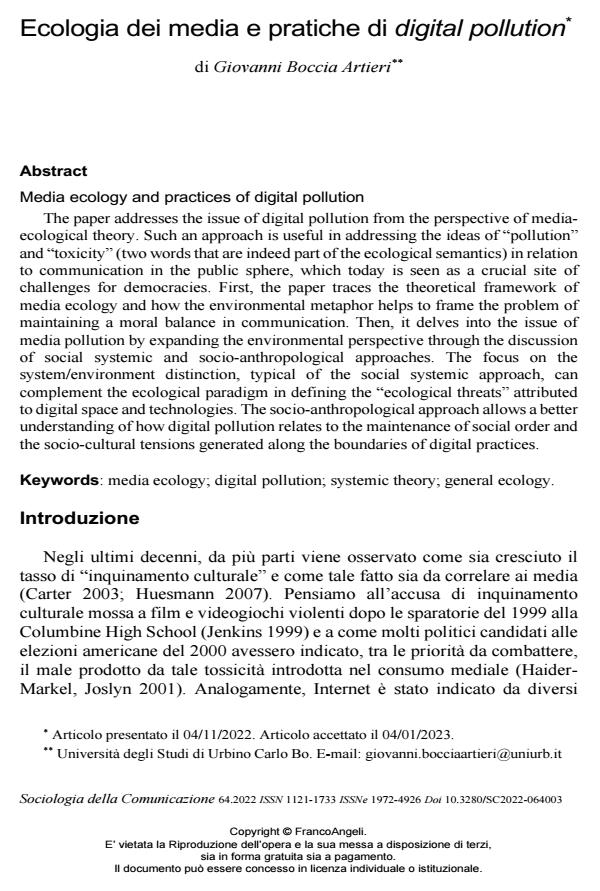Ecologia dei media e pratiche di digital pollution
Titolo Rivista SOCIOLOGIA DELLA COMUNICAZIONE
Autori/Curatori Giovanni Boccia Artieri
Anno di pubblicazione 2023 Fascicolo 2022/64
Lingua Italiano Numero pagine 16 P. 43-58 Dimensione file 299 KB
DOI 10.3280/SC2022-064003
Il DOI è il codice a barre della proprietà intellettuale: per saperne di più
clicca qui
Qui sotto puoi vedere in anteprima la prima pagina di questo articolo.
Se questo articolo ti interessa, lo puoi acquistare (e scaricare in formato pdf) seguendo le facili indicazioni per acquistare il download credit. Acquista Download Credits per scaricare questo Articolo in formato PDF

FrancoAngeli è membro della Publishers International Linking Association, Inc (PILA)associazione indipendente e non profit per facilitare (attraverso i servizi tecnologici implementati da CrossRef.org) l’accesso degli studiosi ai contenuti digitali nelle pubblicazioni professionali e scientifiche
The paper addresses the issue of digital pollution from the perspective of media-ecological theory. Such an approach is useful in addressing the ideas of "pollution£ and "toxicity" (two words that are indeed part of the ecological semantics) in relation to communication in the public sphere, which today is seen as a crucial site of challenges for democracies. First, the paper traces the theoretical framework of media ecology and how the environmental metaphor helps to frame the problem of maintaining a moral balance in communication. Then, it delves into the issue of media pollution by expanding the environmental perspective through the discussion of social systemic and socio-anthropological approaches. The focus on the system/environment distinction, typical of the social systemic approach, can complement the ecological paradigm in defining the 2ecological threats" attributed to digital space and technologies. The socio-anthropological approach allows a better understanding of how digital pollution relates to the maintenance of social order and the socio-cultural tensions generated along the boundaries of digital practices.
Parole chiave:media ecology; digital pollution; systemic theory; general ecology.
Giovanni Boccia Artieri, Ecologia dei media e pratiche di digital pollution in "SOCIOLOGIA DELLA COMUNICAZIONE " 64/2022, pp 43-58, DOI: 10.3280/SC2022-064003